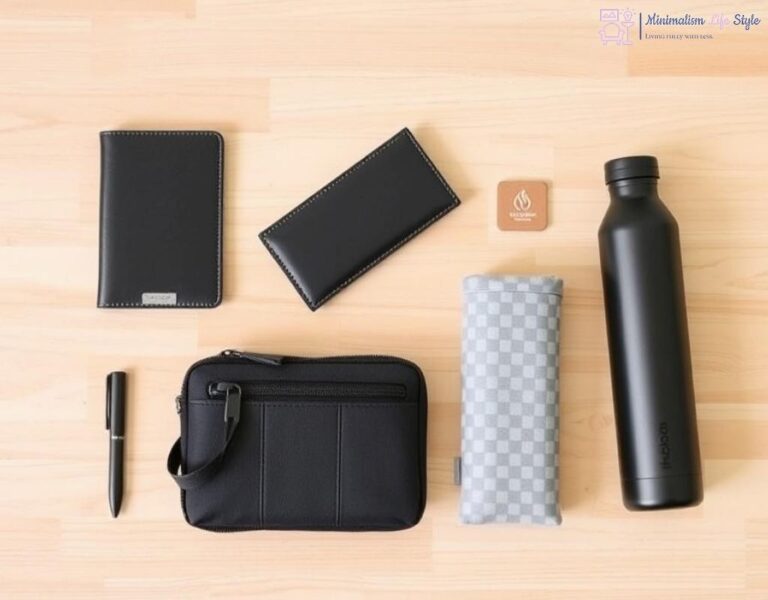Essential Phrases for Every Traveler
Traveling to a new country is an exhilarating experience, but it can also be daunting when faced with a language barrier. Knowing a few essential phrases can transform your interaction with locals, making your journey smoother and more enjoyable. This article highlights crucial phrases every traveler should learn to enhance their travel experience.
While you may not have time to become fluent in a new language before your trip, mastering a handful of key phrases can significantly improve your ability to navigate new environments. These phrases focus on everyday interactions, helping you connect with locals and efficiently handle common situations.
- Hello – A friendly greeting goes a long way.
- Thank you – Gratitude is universal; expressing it can foster goodwill.
- Please – Politeness can open doors and create positive interactions.
- Where is…? – Essential for asking for directions or finding locations.
- How much does this cost? – A must-know for shopping and dining.
- I need help – Important for emergencies or when in distress.
Every traveler encounters unique scenarios that require specific phrases. Below is a comparison of useful phrases for various contexts, ensuring you’re prepared for any situation you might face while exploring a new destination.
| Situation | Phrase | Translation Example |
|---|---|---|
| Ordering Food | “I would like…” | “Me gustaría…” |
| Asking for Directions | “Can you help me find…?” | “¿Puedes ayudarme a encontrar…?” |
| Booking a Room | “Do you have a room available?” | “¿Tienen habitaciones disponibles?” |
| Transportation Inquiry | “Where is the bus station?” | “¿Dónde está la estación de autobuses?” |
By integrating these phrases into your travel repertoire, you’ll not only navigate better but also immerse yourself in the local culture. Remember, it’s not just about the words; it’s about the connections you’ll make along the way.
Visual Aids: Your Best Communication Ally
Navigating the complexities of communication while traveling can often feel overwhelming, especially in unfamiliar territories. However, one of the most effective strategies to bridge the language gap is through the use of visual aids. These tools not only enhance understanding but also foster connections that transcend spoken language, making your travel experience more enriching.
Visual aids serve as an excellent companion in your quest to simplify language learning. From pictures and symbols to maps and signs, these elements can convey meaning without the need for extensive vocabulary. Imagine entering a bustling local market; pointing to a visual representation of your desired item can eliminate confusion and lead to a more enjoyable shopping experience. Visual cues provide clarity, allowing for smoother interactions with vendors and locals alike.
Furthermore, integrating visual aids into your travel toolkit can significantly boost your confidence. For instance, carrying a small illustrated phrasebook can serve as a quick reference guide, helping you navigate various situations. In scenarios where words may fail you, such as asking for directions or ordering food, simply showing a picture can spark understanding and even laughter. This not only eases tension but also builds rapport with those you meet.
Moreover, technology has further enhanced our ability to use visual aids effectively. Mobile applications that offer translation features often include image recognition capabilities, allowing travelers to snap a photo of a sign or menu and receive instant translations. This immediacy transforms the way you communicate and interact with your surroundings, providing a sense of empowerment that can significantly enhance your travel experience.
Tech Tools: Language Apps That Simplify Travel
In an age where technology shapes nearly every aspect of our lives, travel language learning has also evolved, offering innovative solutions that cater to the needs of modern explorers. Language apps have emerged as indispensable tools for travelers seeking to communicate effectively without the burden of extensive vocabulary. By harnessing the power of technology, these applications not only facilitate learning but also enrich the travel experience.
The appeal of language apps lies in their accessibility and user-friendly interfaces. Whether you’re a seasoned globetrotter or a first-time traveler, these tools provide on-the-go learning experiences that can be tailored to your schedule. With interactive features that promote engagement, users can practice speaking, listening, and reading at their own pace, making language acquisition feel less like a chore and more like an adventure.
To maximize your travel experience, consider integrating these top language apps into your toolkit. Each app offers unique features that can simplify your communication efforts and enhance your cultural immersion.
- Duolingo: A gamified approach to learning, Duolingo turns language acquisition into a fun experience. With bite-sized lessons and a variety of languages, it’s perfect for quick practice.
- Google Translate: This powerful tool offers text and voice translations in real-time. The camera feature allows users to translate signs and menus instantly, easing everyday communication.
- Babbel: Focused on real-life conversations, Babbel’s courses are designed by language experts. It’s ideal for travelers who want to engage with locals right away.
- Pimsleur: Known for its audio-based learning, Pimsleur is excellent for auditory learners. The method emphasizes pronunciation and conversational skills, making it easier to speak confidently.
Incorporating these language apps into your travel preparation not only builds your vocabulary but also empowers you to forge genuine connections with the locals. Imagine navigating a bustling street market, confidently ordering a meal, or asking for directions—all made possible through the support of these digital companions. As you embrace these tech tools, remember that the essence of travel lies in the interactions you cultivate along the way, making every phrase learned worthwhile.
Cultural Context: Navigating Nuances in Communication
When embarking on a journey to a foreign land, understanding the cultural context in which communication occurs is vital. Language is not just a means of exchanging words; it is deeply intertwined with local customs, traditions, and social norms. By recognizing these nuances, travelers can engage more meaningfully with locals, enriching their experiences and fostering mutual respect.
One of the key aspects of effective communication is recognizing that expressions of politeness and formality can vary significantly across cultures. For instance, while a friendly ‘hello’ might be universally understood, the way in which it is delivered can convey different levels of respect or familiarity. In some cultures, a slight bow or nod may accompany greetings, while in others, maintaining eye contact is a sign of sincerity. By being aware of these subtleties, travelers can avoid misunderstandings and build rapport with those they meet.
Every culture has its unique set of customs that dictate how communication is conducted. Recognizing these customs can prevent unintentional faux pas. For example, in certain countries, discussing personal topics such as family or income too soon can be seen as intrusive. Conversely, in other places, such inquiries might be considered friendly and engaging. Being adaptable and observant allows travelers to navigate these cultural waters smoothly.
Another important consideration is the use of gestures. Many cultures employ specific gestures that can either complement spoken communication or serve as standalone forms of expression. However, what is considered a friendly gesture in one culture might be offensive in another. For instance, while a thumbs-up may signify approval in many Western cultures, it can be seen as vulgar in parts of the Middle East. Understanding these non-verbal cues can enhance interactions and demonstrate respect for local traditions.
Empathy plays a crucial role in effective communication across cultures. By putting oneself in the shoes of the locals, travelers can better appreciate their perspectives and tailor their communication accordingly. This emotional intelligence not only aids in understanding but also fosters connections that transcend language barriers. Simple acts like learning a few phrases in the local dialect can go a long way in bridging gaps and expressing genuine interest in the culture.
Moreover, leveraging technology can enhance this empathetic approach. Language apps often include cultural tips and etiquette advice, helping travelers navigate sensitive topics or behaviors. When equipped with this knowledge, individuals can engage more thoughtfully, paving the way for genuine interactions. Ultimately, the goal is to foster an environment where communication is not only about exchanging information but also about sharing experiences and building relationships.
| Aspect | Western Culture | Eastern Culture |
|---|---|---|
| Politeness | Direct communication is valued | Indirect communication is preferred |
| Gestures | Thumbs-up is positive | Thumbs-up can be offensive |
| Personal Questions | Commonly accepted | May be viewed as intrusive |
Body Language: The Universal Language of Travel
When words fail, the body speaks. In the realm of travel, where diverse cultures and languages converge, body language emerges as a powerful tool for communication. Understanding and utilizing non-verbal cues can significantly enhance interactions and create connections that transcend linguistic barriers. This article delves into the nuances of body language, showcasing its vital role in simplifying travel communication.
It’s fascinating how gestures, facial expressions, and postures can convey meaning without uttering a single word. Each culture has its unique set of non-verbal signals that can either facilitate understanding or lead to confusion. For travelers, being aware of these signals can make all the difference when navigating unfamiliar territories. Here are some common body language cues and their interpretations across various cultures:
| Gesture | Meaning in Western Cultures | Meaning in Eastern Cultures |
|---|---|---|
| Eye Contact | Confidence and honesty | Respect; too much can be seen as rude |
| Handshake | Standard greeting | Formal greeting, but can vary in how it’s performed |
| Nodding | Agreement | Affirmative, but can signify understanding as well |
| Pointing | Directing attention | Considered impolite; use an open hand instead |
Gestures can serve as an effective means of communication when words escape you. Utilizing common, universally recognized gestures can enhance your travel experience. Here are some practical tips for harnessing the power of gestures:
- Smile: A warm smile can break the ice and foster immediate rapport.
- Use Open Hands: Open-handed gestures are welcoming and convey honesty.
- Be Observant: Pay attention to local customs regarding gestures; mimic what you see to blend in.
- Ask Permission: Before taking pictures, use your body language to inquire about consent, showing respect for personal space.
The most effective way to utilize body language is through empathy. By being attuned to the feelings and reactions of those you interact with, you can adjust your non-verbal cues accordingly. This adaptability not only enhances communication but also enriches your travel experience. Remember, the goal is not merely to convey information but to build meaningful connections. When you approach interactions with an open heart and a willingness to understand, body language becomes a bridge, linking diverse cultures and fostering authentic relationships.




